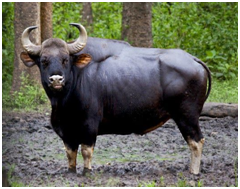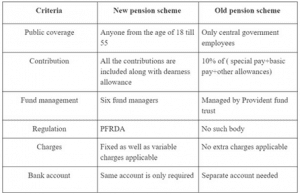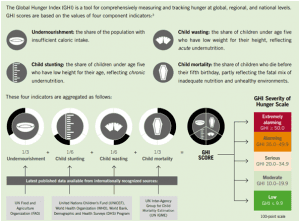INTERNATIONAL RELATIONS
1. WHAT IS CHINA’S ‘WOLF WARRIOR’ DIPLOMACY?
THE CONTEXT: Recently, the 20th National congress of Chinese Communist Party (CCP) held and it is widely expected that Chinese President Xi Jinping will get an endorsement for a third term as President. Under Xi, China has witnessed a unique style of governance, which differs in many ways from that of more recent Chinese leaders.
THE EXPLANATION:
As China’s position has undergone a change in world affairs over the years, Xi has advocated for a more intensive approach towards handling issues both domestically and internationally. The “wolf warrior” style of Chinese diplomacy particularly attracted attention.
What does wolf warrior diplomacy mean?
- A term that gained popularity, especially after Xi became President, “wolf warrior diplomacy” is a tactic for the Chinese government to extend its ideology beyond China and counter the West and defend itself. It is an unofficial term for the more aggressive and confrontational style of communication that Chinese diplomats have taken to in the last decade.
Why is China resorting to wolf-warrior diplomacy?
- Soaring Nationalism: Since 2010, when China’s GDP overtook Japan’s as the world’s second largest, the Chinese have become more confident and China’s foreign policy has become more assertive.
- China as a great power: The latest diplomatic offensive is also part of the official effort to project China as a great power leading the global fight against the COVID-19. China’s image suffered during the crisis due to its bungled handling of the outbreak at the early stage.
- With the assertive and ambitious Belt and Road Initiative and Maritime Silk Road, China has consolidated its influence over the Indian neighbours as almost all the neighbour sans Bhutan have shown the keen interests in joining.
2. INDIA OPPOSES G7’S JUST ENERGY TRANSITION PLAN
THE CONTEXT: The G7 nations’ plan of persuading India to start negotiations on a Just Energy Transition Partnership (JETP), an initiative of the rich nations to accelerate phasing out of coal and reducing emissions has hit a road-block.
THE EXPLANATION:
About Just Energy Transition Partnership (JETP)
- JETP, an initiative of the rich nations to accelerate phasing out of coal and reducing emissions.
- The JETP initiative is modelled for the South Africa, to support South Africa’s decarbonisation efforts.
- It aims to reduce emissions in the energy sector and accelerate the coal phase-out process.
- JETP makes various funding options available for this purpose in identified developing countries.
- The JETP was launched at the COP26 in Glasgow with the support of the United Kingdom (UK), the United States (US), France, Germany, and the European Union (EU)
- Following that G7 has announced for a similar partnership in India, Indonesia, Senegal, and Vietnam.
- India’s stand – India argues that coal cannot be singled out as a polluting fuel, and energy transition talks need to take place on equal terms.
Significance:
- This is significant because this approach takes into account the societal and economic development of each partner and will not try to force-feed partners a standard solution.
- That partnership—with special emphasis on the words “just” and “transition”—is about helping fund South Africa’s decarbonization by replacing coal usage with clean energy.
- At its core, the idea is to assist green transitions by making finance available from developed countries, multilateral institutions and groups of green investors.
Strong opposition:
- If the Power Ministry continues to resist, India could still get into the negotiations if the PMO decides to intervene.
- According to India’s updated NDC, it stands committed to reduce the emission intensity of its GDP by 45 per cent by 2030, from 2005 level and achieve about 50 per cent cumulative electric power installed capacity from non-fossil fuel-based energy resources by 2030.
ENVIRONMENT, ECOLOGY AND CLIMATE CHANGE
3. SEA CUCUMBER
THE CONTEXT: Citing media reports of a Chinese firm investing in a sea cucumber farm in Pungudutivu, off Jaffna Peninsula in northern Sri Lanka, local fishermen have raised concern over its potential impact on their livelihoods, marine ecosystem, and land.
THE EXPLANATION:
- In 2021, Sri Lanka exported about 336 tonnes of sea cucumber to China, Singapore, and Hong Kong, according to local media reports. Desperate to find dollars to stabilise its battered economy, the Sri Lankan government appears to have identified potential for both, foreign investment and exports in breeding and selling the sausage-shaped marine animal considered a delicacy in China and Southeast Asia. Locals do not consume sea cucumbers.
- In June 2022, the Cabinet approved a proposal for a large-scale commercial sea cucumber project spanning 5,000 acres in Jaffna, Mannar, Kilinochchi and Batticaloa districts in the north and east, after Sri Lanka earned “a significant amount” of foreign exchange by exporting sea cucumbers.
Significance of Sea Cucumber?
- They are an important constituent of the marine ecosystem as they play an important role in maintaining the health of the ecosystem.
- It has no limbs or eyes, or blood.
- There are some 1,250 known species, and many of these animals are shaped like soft-bodied cucumbers.
- Demand: Sea cucumbers are in high demand in China and Southeast Asia, where they are consumed as food and used in medicine.
- This endangered species is primarily smuggled from Tamil Nadu to Sri Lanka.
COMMON NAME: Sea Cucumbers
SCIENTIFIC NAME: Holothuroidea
TYPE: Invertebrates
DIET: Omnivore
Protection:
- Protected under Schedule I under the Wildlife Protection Act (WPA), 1972 so their trade is banned.
- IUCN Red List:Brown Sea Cucumber (Endangered),Blackspotted Sea Cucumber (Least Concern), Blue Sea Cucumber (Data Deficient).
- The Ministry of Environment, Forests and Climate Change imposed a total ban on harvesting and transporting sea cucumbers in 2001.
First conservation area:
- Lakshadweep has created the world’s first conservation area for sea cucumbers.
- Other than the sea around Lakshadweep Islands and Andaman Nicobar Islands, the Gulf of Mannar at the confluence of the Indian Ocean and Bay of Bengal in Tamil Nadu is also home to sea cucumbers.
4. SRI LANKA PROPOSAL TO TRANSLOCATE GAURS
THE CONTEXT: The Indian government is considering a proposal from Colombo to export a number of gaurs, or Indian bisons, to Sri Lanka to revive the population of gavaras that have been extinct in the island since the end of the 17th century.
THE EXPLANATION:
The Zoological diplomacy-
- If the project is cleared, it would be the first such agreement between India and Sri Lanka, and part of a global trend of “wildlife or zoological diplomacy”.
- The sources from Ministry of External Affairs (MEA), which received the request in August 2022, has now forwarded it to the Ministry of Environment and Forests (MoEF), “seeking comments” on the proposal to transport at least six specimens, including a bull and three to five cows.
- According to the proposal, the Sri Lankan Department of Zoological Gardens would then carry out “captive breeding a herd of about a dozen specimens over a five year period before trial reintroduction to the wild could take place in accordance with [internationally mandated] guidelines for re-introductions”.
- The suggestion for the proposal came from Sri Lankan conservationist Rohan Pethiyagoda, who was awarded the Linnean medal 2022 (U.K.based equivalent of the Nobel prize for zoology) for his work on restoring fresh water and forest biodiversity.
ABOUT INDIAN BISONS
- Distribution: Native to South and Southeast Asia
- In India, they are found in Nagarhole, Bandipur, Masinagudi National Parks and BR Hills.
- Conservation Status: Vulnerable in IUCN Red List.
- Included in the Schedule I of the Wild Life Protection Act, 1972.
Key Facts:
- It is the tallest species of wild cattle found in India and largest extant bovine.
- Recently, the first population estimation exercise of the Indian Gaur (Bison) was carried out in the Nilgiris Forest Division, Tamil Nadu.
- Recently, the conservation breeding of Gaur was started at Mysuru zoo under the conservation breeding programme of the Central Zoo Authority (CZA)
SCIENCE AND TECHNOLOGY
5. WHAT IS QUANTUM ENTANGLEMENT?
THE CONTEXT: The 2022 Nobel Prize in physics recognized three scientists who made ground-breaking contributions in understanding one of the most mysterious of all natural phenomena: quantum entanglement.
THE EXPLANATION:
What is Quantum Entanglement?
- The quantum entanglement means that aspects of one particle of an entangled pair depend on aspects of the other particle, no matter how far apart they are or what lies between them. These particles could be, for example, electrons or photons, and an aspect could be the state it is in, such as whether it is “spinning” in one direction or another.
- The strange part of quantum entanglement is that when you measure something about one particle in an entangled pair, you immediately know something about the other particle, even if they are millions of light years apart. This odd connection between the two particles is instantaneous, seemingly breaking a fundamental law of the universe. Albert Einstein famously called the phenomenon “spooky action at a distance.”
Two entangled particles
- The spookiness of quantum entanglement emerges from the reality of quantum superposition, and was clear to the founding fathers of quantum mechanics who developed the theory in the 1920s and 1930s.
- To create entangled particles you essentially break a system into two, where the sum of the parts is known. For example, you can split a particle with spin of zero into two particles that necessarily will have opposite spins so that their sum is zero.
GOVERNMENT SCHEMES AND INITIATIVES IN NEWS
6. OLD PENSION VS NEW PENSION SCHEME
THE CONTEXT: After Rajasthan and Chhattisgarh, recently Punjab is the latest State that has announced its plan to revert to the Old Pension Scheme (OPS).
THE EXPLANATION:
OPS vs NPS: Difference
- National Pension Scheme replaced the OPS with effect from April 1, 2004. Under the old pension scheme, retired employees received 50% of their last drawn salary as monthly pensions. In contrast, NPS is a contributory pension scheme under which employees contribute 10% of their salary (Basic + Dearness Allowance) and the Government contributes 14% towards the employees’ NPS accounts.
- The funds under NPS are managed by PFRDA-approved pension fund managers. The onus of purchasing the annuity plan from approved pension providers is on the employee under NPS. At the time of retirement, employees are required to purchase an annuity plan for a monthly pension with a minimum of 40% of the accumulated corpus. The employee can withdraw the remaining amount as a lump sum.

THE PRELIMS PRACTICE QUESTION
QUESTION OF THE DAY
Q1. Consider the following statements about indicators used to calculate Global Hunger Index:
- Undernourishment is given more weightage than child stunting.
- Child stunting and child wasting are given equal weightage.
- Child mortality is given less weightage than Undernourishment.
Which of the statements given above is/are correct?
- 1 only
- 1 and 2 only
- 3 only
- 1 and 3 only
Answer: B
Explanation:
Please refer to given table-



